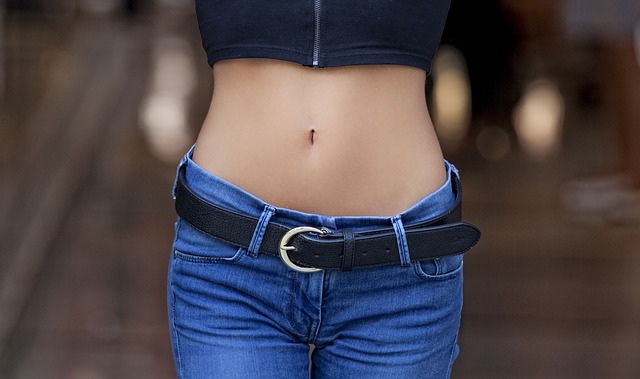Plastic Surgery for Belly Button and Belly Button Piercing
 Introduction to Belly Buttons and Plastic Surgery
Introduction to Belly Buttons and Plastic Surgery
Patients are often curious about cosmetic procedures related to the belly button. Plastic surgery for belly button piercing, in particular, is a topic that comes up time and time again.
Belly buttons are a unique aspect of the human anatomy. We all have belly buttons but many of us are not exactly sure what they do, why we have them, and what we can do with them from a surgical standpoint.
What is the Normal Location of the Belly Button?
There is no consensus on the ideal location of the belly button. Opinions of the ideal location vary based on gender, but most studies focus exclusively on females, as the majority of belly button plastic surgery occurs in women.
The most common area plastic surgeons believe the female belly button should sit is in the midline at the top level of the hip bones.
Another common area cited by plastic surgeons for female belly button is a point in the midline 15 cm above the pubic bone.
What’s the Difference Between Innie and Outie Belly Buttons?
“Innie” belly buttons are the so-called normal type of belly button. It is the remnant of the connection from mother to growing baby where the umbilical cord is cut. It should have a gentle smooth contour with a depression.
An “outie” is usually due to one of two reasons. The first and most common is a hernia. A hernia is an out pouching of our intestines through our abdominal wall in a weak spot. Think of someone trying to poke outside your body from the inside. They would look for a weak spot and put their finger through. This is what an “outie” looks like when it is caused by a hernia. Luckily most of these close or go away on their own as the child grows. The second reason is sometimes when we are born we can have a little infection or irritation at the base of the belly button. This can scar and lead to an “outie”.
Both causes of outie belly buttons be corrected with surgery.
Belly Button Plastic Surgery Procedures

A very common procedure performed on the belly button is a hernia repair. Hernia repair is common in children born with an “outie” and after pregnancy, when the pressure from the baby pushes out and if there was a weak spot at the base of the belly button then surgery will be required. Surgery is used in a hernia to relocate the abdominal or stomach contents back into the stomach to make sure they don’t get caught and cause an infection and pain.
When performing a tummy tuck one of the most common questions people have is what happens to the belly button? For the majority of patients the same belly button is kept its just brought out through a new hole as the extra skin is pulled down. There is much debate in plastic surgery literature as to what the perfect hole is to bring the belly button out from. Many discuss star shapes, x shapes, smiley faces, frown faces, v shapes, and inverted v shapes. The size and shape of the belly button can stretch with pregnancy and weight fluctuations as well.
Sometimes plastic surgeons are asked to reconstruct or create a belly button from scratch. Cancer, trauma, or infections may cause the loss of the belly button. There are lots of techniques but the majority of them have the same central tenet which is to make a few flaps of skin and sew them down to the abdominal wall so once it is healed it has a nice saucer appearance. There are actually some patients who do not like to have a belly button at all.
What About Infected Belly Button Piercings?
Interestingly, we get this question a lot. Once pierced, it takes weeks to months for the belly button lining to completely seal over and become normal skin so there is a lot of opportunity for skin bugs to crawl in there. Many people assume a red sore belly button piercing is a trivial matter. Dr. Neinstein thinks these should be taken seriously because when treated early the piercing and the quality of the belly button skin can be saved but if patients wait too long than they may have changes to the anatomy.
How to Treat an Infected Belly Button Piercing
Below are the instructions provided by Dr. Ryan Neinstein, Plastic Surgeon MD, on how to properly treat a belly button piercing infection. Follow these instructions closely and carefully.
- Do not remove the jewelry, especially if you are experiencing drainage. If you remove the jewelry, the piercing will not drain properly and the bacteria will get trapped inside your body, which can cause an abscess to form as the hole closes up.
- Wash your hand with antibacterial soap before you proceed to clean your piercing.
- Clean the piercing with a saline solution or a salt water mixture (1 tsp. of sea salt and 5 oz. of warm water). You can use a clean cotton swab to rub the solution on the piercing, or you can turn the cup with the solution upside down on your piercing while laying down to submerge it completely for 10 minutes. This will kill the bacteria causing the infection. Do this no more than twice a day.
- Consider using an antiseptic cream for a mild infection (not an ointment). You don’t want to leave a gob of it around the piercing, as this can attract more bacteria. Just put a little on the piercing and wipe away the excess. Try carefully pushing the jewelry in and out so that you can get some of the antibiotic cream into the wound.
- If there isn’t any pus, consider using a hot compress to increase blood circulation to the area. (Make sure to disinfect the compress with hot water and salt.) Wipe the area dry after using.
- If there is pus, you can try using hydrogen peroxide to help drain the pus and clean the area, but NEVER overuse hydrogen peroxide—don’t use it more often than once a day—and do not use it as an aftercare option on a new piercing, as it can dry it out and irritate it. Don’t use alcohol either as this can dry out the area and create further cracking and irritation, and in some cases, spread an existing infection.
- You can also apply some diluted tea tree oil, but don’t do this more than two to three times a week because tea tree oil is very astringent and extremely drying. Avoid tea tree oil if you have sensitive skin.
- Go to the doctor immediately if you experience fever or nausea. You may need antibiotics, especially if the infection is spreading.
If you think that your belly button piercing is infected, don’t ignore the symptoms and hope the infection goes away on its own. You want to treat it before it develops into an abscess or spreads to your abdomen.
Interested in Belly Button Plastic Surgery?
If you are interested in cosmetic surgery for your belly button contact Neinstein Plastic Surgery, today. We can assist with plastic surgery for belly button piercing or address your outtie belly button to help you get the look you desire.

